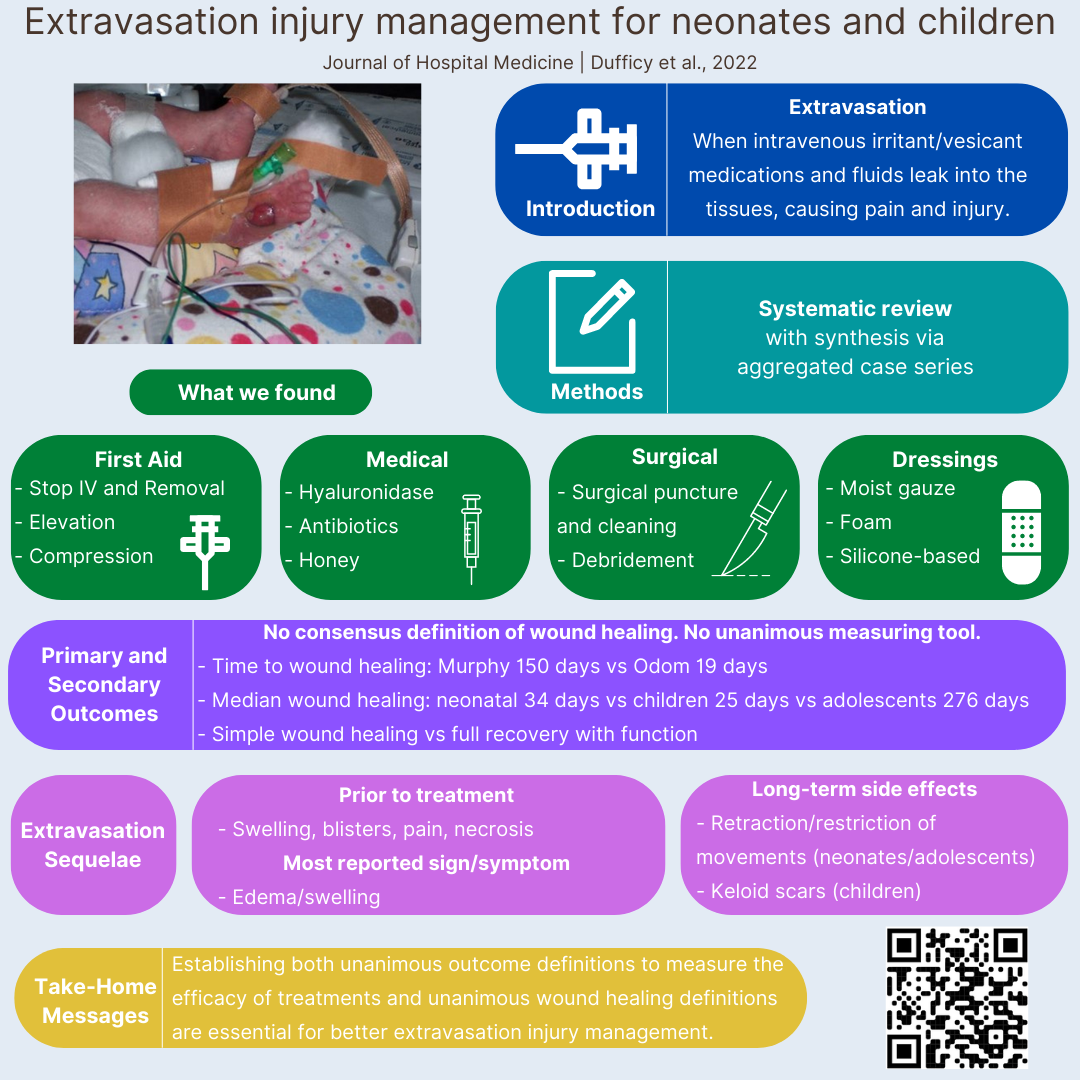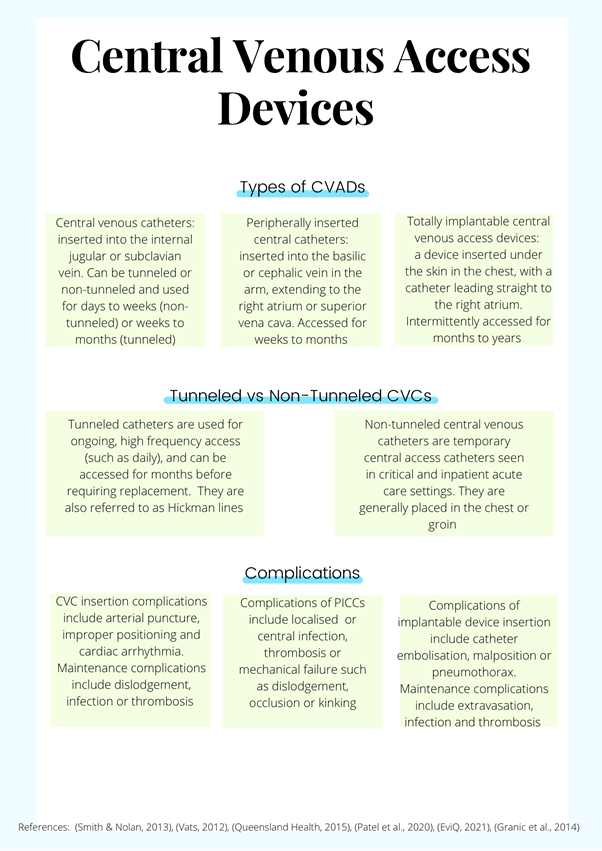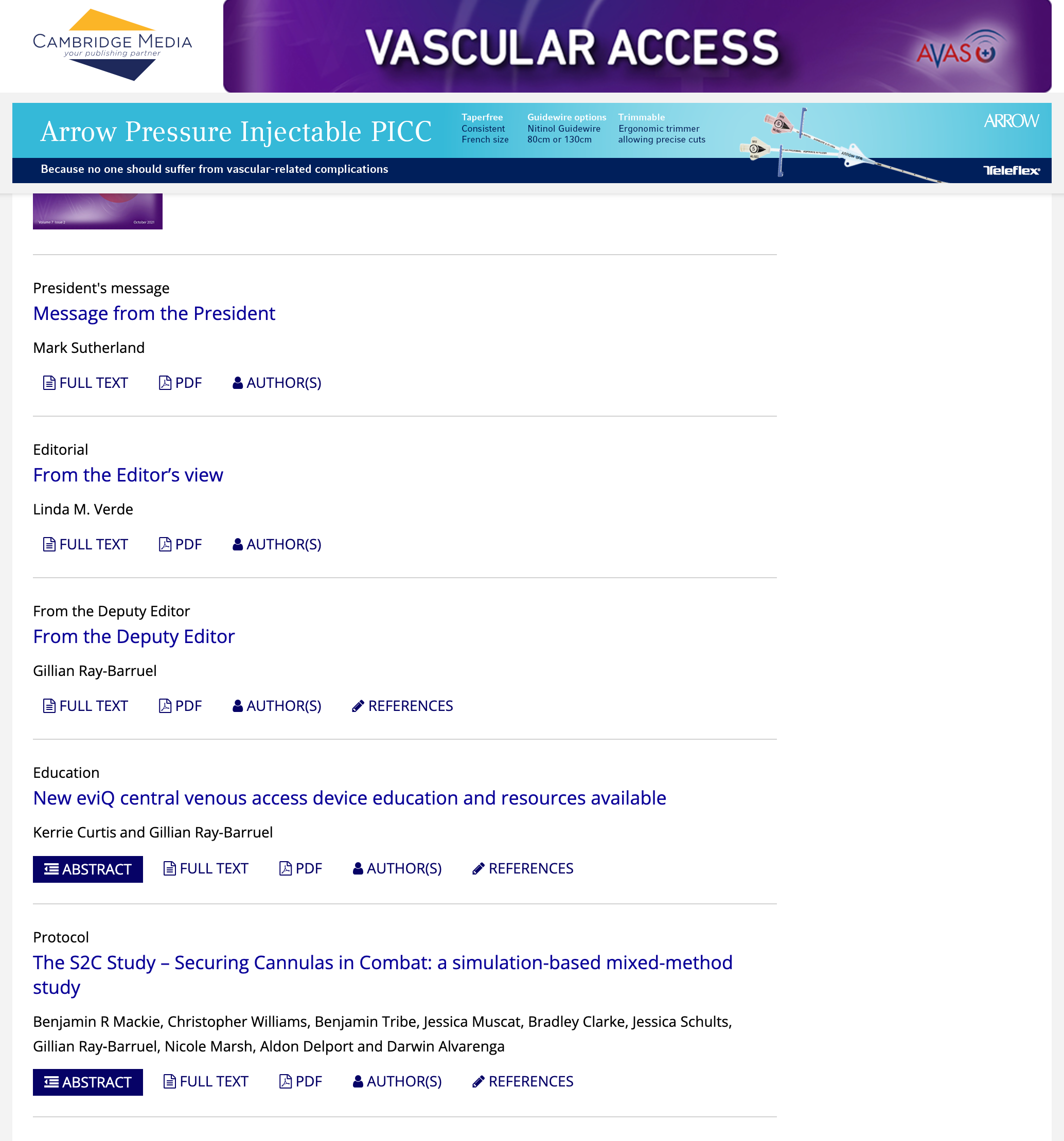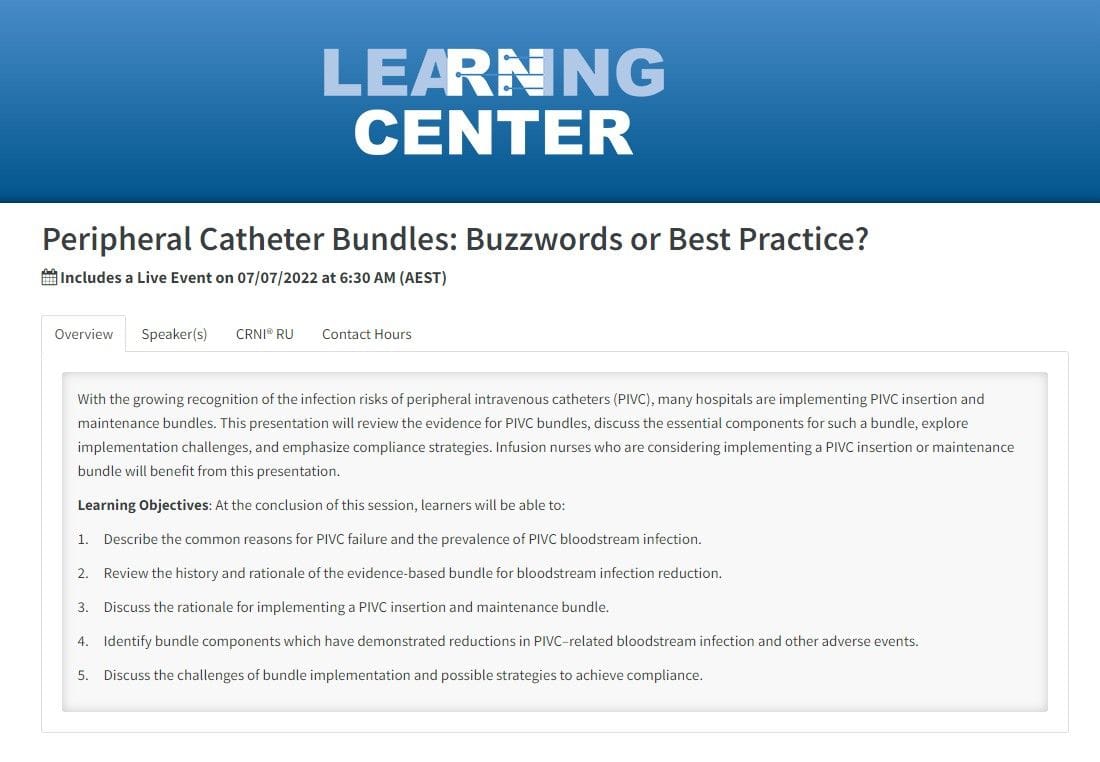Extravasation injury management for neonates and children
Posted by Mitchell Dufficy
on 2 December 2022

| Posted in:educationpatient safety |
INS Webinar: PIVC Bundles
Posted
on 24 June 2022
| Posted in:peripheral intravenous cathetereducationIV management |
Join AVAS today!
Posted
on 24 June 2022
The AVAS mission is to:
“Promote and improve patient safety and clinical outcomes; develop a standard of excellence in the field of vascular access; promote the development in national standards of practice; provide professional development and quality education; develop and share best practices; and promote ongoing vascular access research."
We invite clinicians, vascular access specialists, educators, researchers, and industry partners to join today.
&n...
| Posted in:educationvascular access devices |
Infection Control Matters podcast
Posted by Gillian Ray-Barruel
on 21 June 2022
)
The Infection Control Matters podcast series is well worth a listen, for vascular access and beyond. Check it out!
The team discusses new research and issues on the topic of infection prevention and control. It's chatty and informative, with interviews with doctors, nurses, clinicians, academics and administrators.
"Professor Brett Mitchell (from the University of Newcastle Australia), Associate Professor Deborah Friedman (Barwon Health), Martin Kiernan (University of West Lo...
| Posted in:educationinfection prevention |
PhD Scholarship opportunity
Posted
on 31 March 2022
Preventing adverse events during paediatric cancer treatment: A multi-site hybrid randomised controlled trial of catheter lock solutions.
Project opportunity
This Earmarked Scholarship project is aligned with a recently awarded Category 1 research grant. It offers you the opportunity to work with leading researchers and contribute to large projects of national significance.
One of the first procedures a child undergoes when being treated for cancer is the insertion of a central v...
| Posted in:scholarshipcatheter lock solutions |
Webinar: Skin Integrity Matters: Preventing and Managing Skin Injuries Associated with Vascular Access Devices.
Posted by Rita Nemeth
on 18 March 2022
| Posted in:educationpatient safetyvascular access devices |
Vascular Access Device Patency Assessment & Education
Posted
on 24 February 2022
)
Topic: Vascular Access Device: evidence versus current practice for patency assessment & education, brought to you by the Cancer Nurses Society of Australia (CNSA).
Patency assessment: Does your workplace use a standardised, validated tool? What do you assess – blood return, flushing, both? What are the education and competency recommendations for vascular access? Join us to discuss the evidence versus our current practice and walk through two validated assessment to...
| Posted in:educationvascular access devicesguidelinesevidence-based practice |
Central venous access devices
Posted by Lizzy Ostwald
on 17 December 2021
)
What type of central venous access device does my patient have?
Seen in a variety of clinical settings from critical care to outpatient, central venous access devices (CVADs) are catheters that are inserted into a central or peripheral vein and extend into the superior vena cava (SVC) or cavoatrial junction (CAJ), where the SVC meets the right atrium (RA)1,2. Used for the administration of medication, fluid, blood products or nutrition and for phlebotomy sampling, there are thre...
| Posted in:central vascular access devices |
Australian Vascular Access Society: Become a member!
Posted by Gillian Ray-Barruel
on 1 November 2021
The latest issue of Vascular Access is now available to AVAS members. Become a member today! Australian Vascular Access Society (AVAS)

| Posted in:educationvascular access devices |











